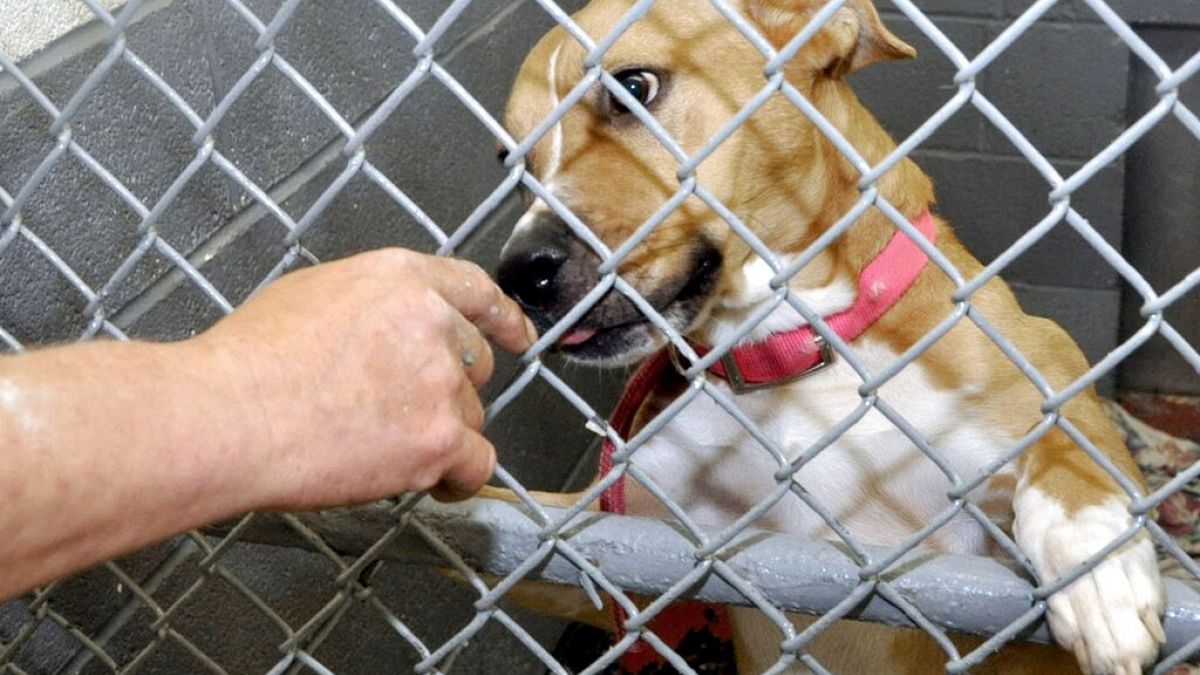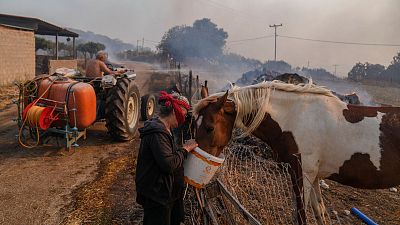Rescue videos receive millions of views online but they are often staged and cause serious psychological and physical harm to the animals.
A cruel trend has emerged online and social media networks seem to be doing little to stop it.
Videos of animals in distress then being rescued at the last minute are popular on TikTok and YouTube.
Typically, users see a scenario like a puppy being strangled by a snake, or a dog tied to a tree or railway tracks with the threat of an oncoming train.
Then at the last minute they are rescued by a bystander.
But campaigners say these videos are staged to make money.
How to spot a staged animal rescue video
These videos can cause extreme physical and psychological harm to the animals involved, including injury and sometimes death.
We are not linking to any of the videos or accounts in order to avoid driving traffic to them.
"One trend that we've been seeing lately is puppy rescue videos in which the dogs are placed in precarious and horrific situations," explains Nina Jackel, activist and founder of the US-based NGO Lady FreeThinker.
"But then you'll see that same dog in another video. You can often identify the same animals being used again and again, which is one way to spot a dubious channel," she tells Euronews Green.
The situations the animals find themselves in in these videos are highly unusual. "But these filmmakers seem to find them [the trapped animals] again and again.
It's possible for a legitimate rescue to stumble on an animal in desperate need occasionally, but not all the time. And if that's the only thing that channel is posting, that's a pretty good sign that that's a fake rescue channel," says Jackel.
But many social media users are still being duped into believing that these scenarios are legitimate.
Many of the comments under fake rescue videos are encouraging or thanking the "human rescuers" for their work.
Why do people put animals in such dangerous or harmful situations? Because on social media, the more users who watch your video the more money the video owner makes.
Popular videos can make thousands of euros.
What are social media platforms doing to stop these videos?
In March 2021, YouTube announced that it would ban fake animal rescue videos.
But since then, more than a hundred have been posted and hundreds have not been deleted, according to tracking from Lady FreeThinker.
Her charity filed a lawsuit against YouTube in 2021, accusing the platform of failing to remove animal abuse content. The legal process is ongoing.
How to report staged animal rescue videos
What can you do to try and put a stop to these videos?
Jackel suggests immediately reporting the video to the social media platform and flagging it as animal cruelty.
"As hard as it is not to share, don't do it. When you do that, you actually get them [video creators] more views, which potentially gets them more money. You also change the algorithm so other people might see the video in their suggested feeds," explained Jackel.
"If you can, don't even watch it. If someone shares one with you, don't click play. You want to interact as little as you can with the video."



